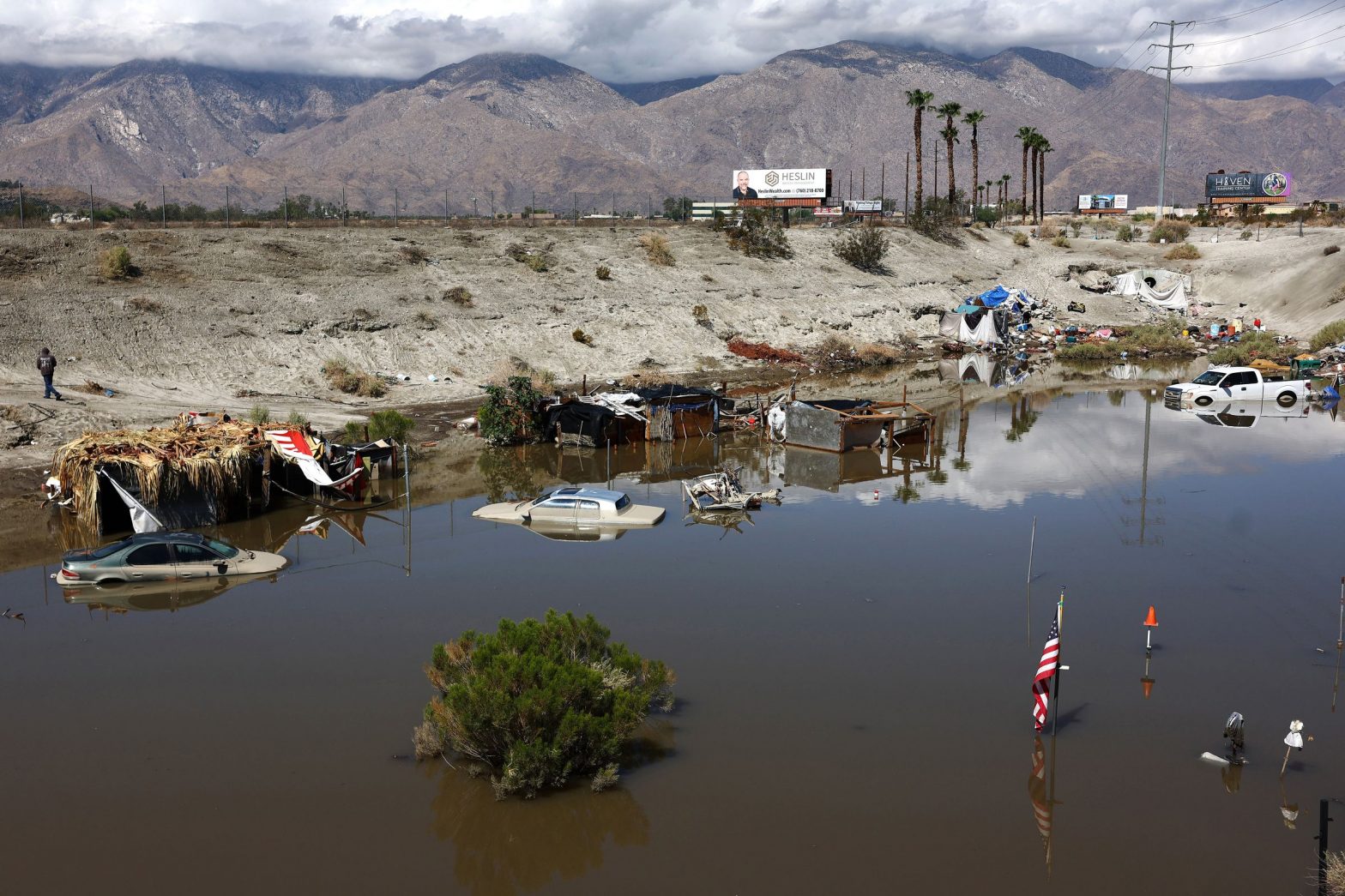/
From tropical storms to wildfires, climate disasters aren’t confined to the places we’re used to seeing them.
Share this story
:format(webp)/cdn.vox-cdn.com/uploads/chorus_asset/file/24866276/1630807228.jpg)
Disasters have no borders, and a summer of unexpected catastrophe across the US shows it. California is notorious for drought and fire, not tropical storms like Hilary that barreled over Los Angeles this week. The East Coast expects hurricanes, not the pollution nightmare triggered by smoke that drifted in from blazes hundreds of miles away. Hawaii’s native greenery isn’t supposed to burn, and yet fires engulfed Maui.
Climate change is sending new calamities to new places — a phenomenon that can be observed not just in the US but all over the world. It’s piling disaster upon disaster on communities figuring out how to adapt to these new realities. Often, they’re faced with some new crisis while still recovering from a previous one.
“We see increasing magnitude of certain types of disasters. We see increasing socioeconomic impact from disasters. We’re also seeing disasters in places where we don’t usually see certain types of disasters, and different types of disasters interacting with one another,” says Andrew Kruczkiewicz, senior staff associate at the International Research Institute for Climate and Society at Columbia Climate School.
Human activity — namely greenhouse gas emissions from using fossil fuels — is now the primary driver of more extreme weather across the world, according to the United Nations Intergovernmental Panel on Climate Change. As greenhouse gases trap heat on our planet, temperatures are rising on land and at sea. Warmer waters churn up bigger storms since hurricanes feed off the heat energy. It’s what fueled Hurricane Hilary into a Category 4 storm over the Pacific, giving it enough juice to maintain tropical storm strength over Baja California and Southern California.
On the other side of the spectrum, the hotter climate is drying up landscapes. It primes forests and grasslands to burn. So when fires do break out, there’s enough tinder for them to explode into mega blazes. Where’s the fire, there’s smoke. And suddenly, prolonged exposure to wildfire smoke is a new public health risk to vast swathes of the US. New York City briefly held the title of the most polluted city in the world in June when a blanket of smoke traveled some 500 miles from raging fires in Quebec to darken skies over the Big Apple.
:format(webp)/cdn.vox-cdn.com/uploads/chorus_asset/file/24710043/236691_Air_pollution_NYC_CWelch_0047.jpg)
Environmental catastrophe isn’t happening in a vacuum, of course. It piles on top of previous harms. It’s no wonder Maui residents are saying that the inferno there this month is no “natural” disaster. US colonialism and the boom and bust of Big Agriculture on the islands transformed the landscape and set the stage for fire. Sugarcane and pineapple plantations tore through the lush, native ecology. When fields went fallow, invasive, ignitable grasses took over and introduced new fire risk — risk that’s growing as climate change exacerbates drought.
The deadliest wildfires in Hawaii’s history leveled Lahaina this month. Lahaina was once the capital of the Hawaiian Kingdom before it became a tourist destination that made it harder for Native Hawaiian residents to afford to live there. In the aftermath, residents face another potential land grab from realtors and developers who might try to capitalize on the disaster. So fire isn’t the only reason families might lose their homes.
Wherever disaster strikes, communities that have been systemically marginalized often face the brunt of the blow. “Communities that are feeling the impact disproportionately are the lower-income populations, are the ones who are systematically deprioritized and traditionally underserved,” Kruczkiewicz says. “That’s always the case with disasters, particularly when we see these compounding.”
As calamities like wildfires and hurricanes move into new territories, they quite literally bump into each other. A hurricane offshore fanned the flames of the recent blazes on Maui, for instance. California’s burn scars raised the risk of flash flooding and landslides from tropical storm Hilary. This phenomenon is often referred to as a “compound event” in climate science, a pileup of more than one kind of threat that often takes a greater toll than the sum of its parts.
:format(webp)/cdn.vox-cdn.com/uploads/chorus_asset/file/24866419/1590254322.jpg)
“The compounding is like, when it rains, it pours … Before you’re able to fully recover, then you are hit again. So the effect of that string of events is worse because you’re living in that framework of a multi-hazard possibility,” says Gonzalo Pita, an associate research scientist at John Hopkins Whiting School of Engineering and director of the MSE in Systems Engineering whose work focuses on disaster risk.
We can still stop these disasters from getting even worse by slashing the greenhouse gas emissions causing climate change. But with people already facing new hazards and multiple hazards all at once, it’s time to prepare for the unexpected.“The situation that we’re living in right now in the country emphasizes the need to be proactive at the administrative county, state, and federal level,” Pita says. He thinks it’s a good moment to reassess emergency plans and even the data policymakers use to make probability assessments about risk. Because as we’ve seen in just one summer, the whole arena is shifting around us.
